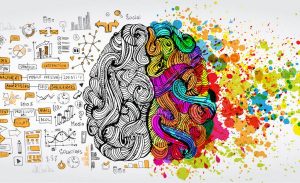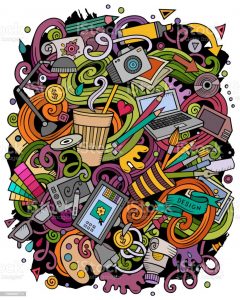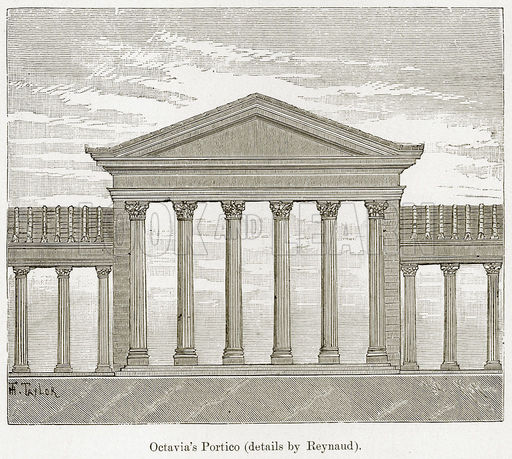In today’s world, we live in a complex society. Designing products and services can help make our lives easier, but how can you distinguish the two? The difference lies in the way artists and designers think. While some argue that design and art are completely separate fields, they both share the same fundamental principles of visual perception. Artists and designers alike study artistic methods to further their creativity. Both designs and artworks are visually appealing.
A design’s elements are created to create a certain mood. For example, a painting can feature colors to describe the subject and to set the mood. Artists and designers use color to portray light, depth, and point of view. They do this by using the color wheel and tenets of color theory. This helps them create a cohesive design and move the viewer’s eye around the composition. In contrast, there is no absolute right or wrong way to use color.

While a good design reflects the artist’s intent, it does not necessarily convey it to everyone. Good design has a purpose and a specific message. It has to communicate this message to its audience. And while we can’t see what an artist’s intentions were, we can always assume that they had some goal in mind when they created the work. If you want a design to be beautiful, make sure you use the elements of art in the design to achieve this goal.
In art, there are three types of balance. A symmetrical composition, which means the image is perfectly balanced, is not a mirror image of itself. An asymmetrical composition, on the other hand, has asymmetrical elements. The heavy elements try to balance the lighter elements, imitating the stabilizing effects of symmetry. The same principle is applied to asymmetrical designs. Asymmetrical images are also unbalanced, requiring some kind of intervention by heavier elements.
Modern design movements were heavily influenced by design disciplines. Artists like Andy Warhol and Roy Lichtenstein used the designs of products to produce paintings. Many Pop Art artists started their careers in commercial design. Others used publishing and commercial printing techniques to create paintings. Many of them incorporated elements from graphic designs into their collages. A design can be both beautiful and functional. The design can be both functional and beautiful, and it can improve a product’s performance or cost.

Graphic design has ancient roots. In ancient China, ancient Egypt, Greece, and Rome, illustrated manuscripts were produced. These early designers didn’t intentionally create a graphic design but incorporated it into their creation. An example of a book in ancient Egypt’s Book of the Dead was a series of texts and pictures meant to aid the dead in the afterlife. Those texts and illustrations were paired with colorful illustrations on rolls of papyrus.
The definitions of art and design are somewhat different. While both are creative, the differences are clear. Aesthetics can enhance a design’s value, but function is the defining characteristic of both. Moreover, aesthetically pleasing designs are useless if they do not solve a problem. Functionality always wins out over aesthetics. Therefore, it’s important to understand the difference between these terms. The answer to this question may surprise you!
 While a good design reflects the artist’s intent, it does not necessarily convey it to everyone. Good design has a purpose and a specific message. It has to communicate this message to its audience. And while we can’t see what an artist’s intentions were, we can always assume that they had some goal in mind when they created the work. If you want a design to be beautiful, make sure you use the elements of art in the design to achieve this goal.
In art, there are three types of balance. A symmetrical composition, which means the image is perfectly balanced, is not a mirror image of itself. An asymmetrical composition, on the other hand, has asymmetrical elements. The heavy elements try to balance the lighter elements, imitating the stabilizing effects of symmetry. The same principle is applied to asymmetrical designs. Asymmetrical images are also unbalanced, requiring some kind of intervention by heavier elements.
Modern design movements were heavily influenced by design disciplines. Artists like Andy Warhol and Roy Lichtenstein used the designs of products to produce paintings. Many Pop Art artists started their careers in commercial design. Others used publishing and commercial printing techniques to create paintings. Many of them incorporated elements from graphic designs into their collages. A design can be both beautiful and functional. The design can be both functional and beautiful, and it can improve a product’s performance or cost.
While a good design reflects the artist’s intent, it does not necessarily convey it to everyone. Good design has a purpose and a specific message. It has to communicate this message to its audience. And while we can’t see what an artist’s intentions were, we can always assume that they had some goal in mind when they created the work. If you want a design to be beautiful, make sure you use the elements of art in the design to achieve this goal.
In art, there are three types of balance. A symmetrical composition, which means the image is perfectly balanced, is not a mirror image of itself. An asymmetrical composition, on the other hand, has asymmetrical elements. The heavy elements try to balance the lighter elements, imitating the stabilizing effects of symmetry. The same principle is applied to asymmetrical designs. Asymmetrical images are also unbalanced, requiring some kind of intervention by heavier elements.
Modern design movements were heavily influenced by design disciplines. Artists like Andy Warhol and Roy Lichtenstein used the designs of products to produce paintings. Many Pop Art artists started their careers in commercial design. Others used publishing and commercial printing techniques to create paintings. Many of them incorporated elements from graphic designs into their collages. A design can be both beautiful and functional. The design can be both functional and beautiful, and it can improve a product’s performance or cost.
 Graphic design has ancient roots. In ancient China, ancient Egypt, Greece, and Rome, illustrated manuscripts were produced. These early designers didn’t intentionally create a graphic design but incorporated it into their creation. An example of a book in ancient Egypt’s Book of the Dead was a series of texts and pictures meant to aid the dead in the afterlife. Those texts and illustrations were paired with colorful illustrations on rolls of papyrus.
The definitions of art and design are somewhat different. While both are creative, the differences are clear. Aesthetics can enhance a design’s value, but function is the defining characteristic of both. Moreover, aesthetically pleasing designs are useless if they do not solve a problem. Functionality always wins out over aesthetics. Therefore, it’s important to understand the difference between these terms. The answer to this question may surprise you!
Graphic design has ancient roots. In ancient China, ancient Egypt, Greece, and Rome, illustrated manuscripts were produced. These early designers didn’t intentionally create a graphic design but incorporated it into their creation. An example of a book in ancient Egypt’s Book of the Dead was a series of texts and pictures meant to aid the dead in the afterlife. Those texts and illustrations were paired with colorful illustrations on rolls of papyrus.
The definitions of art and design are somewhat different. While both are creative, the differences are clear. Aesthetics can enhance a design’s value, but function is the defining characteristic of both. Moreover, aesthetically pleasing designs are useless if they do not solve a problem. Functionality always wins out over aesthetics. Therefore, it’s important to understand the difference between these terms. The answer to this question may surprise you! 
